Historical and Preservation Society of Pottawattamie County
County Seat Council Bluffs, Iowa
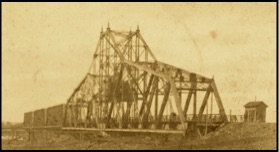
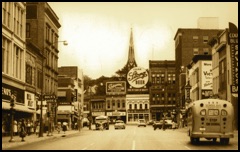
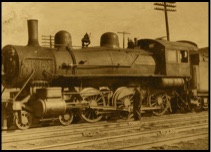
(Story by Richard Warner. Dr. Warner serves on the board of directors of the Historical and Preservation Society of Pottawattamie County.)
Council Bluffs-- Without a Transcontinental Railroad?
It's tricky to play the "what if" game. Wondering what the world would have been like had George Bailey not lived made for an entertaining Jimmy Stewart Christmas movie, but nobody really knows what the country would have been like had Abraham Lincoln and President Kennedy not been assassinated, for example, or what Council Bluffs would be like today had Abraham Lincoln not chanced to visit in 1859. Despite that, we none-the-less should be able to make some fairly safe assumptions.
Its not like there wouldn't have been a transcontinental railroad. California was becoming ever more desirable for the United States. Its inaccessibility made it more like a colony, and government leaders were aware how hard it was for an imperial power to maintain control over remote colonies. Theodore Judah had essentially dedicated his life to a transcontinental route and pushed the formation of the Central Pacific to make it happen. Grenville Dodge had long been a proponent, as well as had many politicians.
The railroad would have happened, but it might not have happened here. How would have that have changed Council Bluffs?
Once the eastern terminus was announced, Council Bluffs suddenly took on a new importance. Railroads were big business back east but plans to cross Iowa hadn't gained traction; the prevailing notion was stage coaches were plenty good enough for Iowa and there wasn't all that much need to rush. Once rails were brought up the river to build the line west all that changed; a railroad that could connect the lines of the east to this new western route should profit handsomely. The rail race across Iowa was on, and the tracks were all heading the same place— Council Bluffs.
By 1865, when rails were first laid, Council Bluffs had already established itself as a significant city through western migration. Had the transcontinental railroad gone elsewhere Council Bluffs surely would be on a rail line, probably more than one, but very unlikely to have been served by eight class I railroads. Almost no city, even those much, much larger, enjoyed that advantage.
Because of this Council Bluffs' growth exploded. The country revolved around railroads, and Council Bluffs had them— and plenty of them. Population doubled in one decade; in 1888 alone 1169 new buildings were constructed. A huge agricultural business developed. It was estimated this section of the Midwest had 200,000 farms pouring their products into the grain elevators of Council Bluffs. A large farm implement manufacturing and sales business developed in the south end of town. The railroads made it easy for manufacturers to get supplies, and to export their finished products. After awhile Bluffs manufacturers were turning out just about everything from confectionery to cigars to carriages. Cattle came as well, resulting in a large stock yards industry.
Once the Golden Spike was driven people and freight could move easily from coast-to-coast, but there was still a barrier for perishable goods. Railroads responded by building special insulated cars and ice plants along the route. The Pacific Fruit Express ice docks at 33rd and 14th Avenue in Council Bluffs were efficient at icing the cars, but labor intensive, providing the city a great many jobs. Thousands of train wheels were manufactured at Griffin Wheel on 9th Avenue, adding hundreds more jobs. Just a few blocks away the Railway Mail Service terminal for a time was the city's largest employer. It's numbers were staggering; the terminal could process 14,000 pieces of mail per hour; they worked three shifts, 365 days a year.
Being a terminal point for so many railroads netted Council Bluffs a first class YMCA. There already was a YMCA in Council Bluffs but its conversion to a Railroad YMCA in 1929 provided growth and prosperity, including expansion and remodeling of the facility as well as more programming.
The railroads grew and so did the town. The tremendous growth led to a very positive attitude in the late 19th century and into the early 20th century. The prevailing notion was there existed no limit to our potential; "no city east or west possesses the assurance of profitable returns as does Council Bluffs." By 1953 the Union Pacific was the city's single largest employer with a full quarter of the population dependent upon the railroads for a living.
\
Council Bluffs position as milepost zero of the transcontinental railroad led to explosive growth and variety of industries that in one way or another related to the railroads, such as manufacturing train wheels, grain elevators, and the mail terminal.

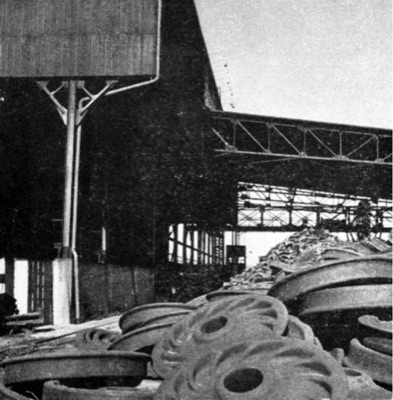
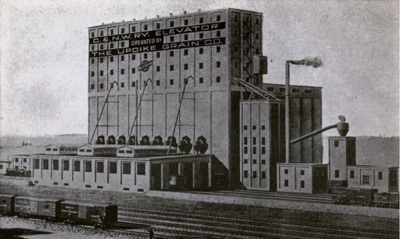
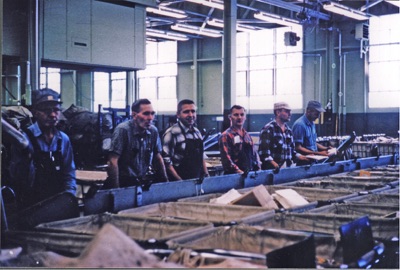
Not everything the railroads brought was desirable. Railroads provided an endless supply of transient strangers, which proved great prospects for those of evil intent. Historian Ryan Roenfeld noted, "The wily skills shown on the muddy streets of Council Bluffs during the late 19th century would be the envy of the author of any Nigerian e-mail scam circulating the Internet today." Council Bluffs was a centralized location for con artists to work from; it was so much easier to just stay put and let the pigeons flock to them. Better yet, the victims were generally just passing through. Before they could cause too much fuss they were on another train out of town, somewhat less financially well off than when they arrived. Where were the police during all of this? It appears as long as no locals were hassled strangers passing through were considered fair game. It was a different era with a different attitude; one law enforcement officer was quoted as saying it serves the victims right; "The shenanigans only succeeded because of the fundamental dishonesty of the victims wanting something for nothing."
The railroads were, and remain, as important as ever, but it doesn't take nearly as many people to keep the trains rolling. Diesels don't require the manpower that steam locomotives did; they need less maintenance and a fireman isn't necessary in the cab. Much that had been done by hand became mechanized. Even the Railway Mail Service terminal became a casualty of the ZIP code and the mechanization it permitted. Though the trains kept right on rolling to and through Council Bluffs employment dipped precipitously and the city fell into economic doldrums. As business dipped local merchants couldn't afford improvements, making the downtown look outdated; by the 1960s a whopping 77% of southwest Iowa retail business was going across the river to Nebraska. This triggered the aggressive urban renewal project that dramatically changed downtown.
So where does that leave us in our "what if" game? If the transcontinental railroad had started elsewhere the best guess is the metro area would be much smaller; some prognosticators have speculated the Council Bluffs/Omaha population would be closer to ten thousand than the nearly one million it is today. We would likely be minus some of our tourist attractions. Seems unlikely the Union Pacific would have placed their museum in Council Bluffs had milepost zero been elsewhere. Would UP Chief Engineer Dodge have built his home in Council Bluffs if he had been working out of a different city? The "Squirrel Cage" jail came into being because the explosive growth of the city fueled by the railroads outpaced the efforts of law enforcement to keep up. Additional capacity was need quickly and economically. Certainly there wouldn't have been a Golden Spike monument, as there would have been no milepost zero along Ninth Avenue to mark.
What Council Bluffs really would have looked like without the transcontinental railroad will never be known exactly. It's not a risky assumption, however, that the metro area would be much different had that encounter between Lincoln and Dodge not taken place on the veranda of the Pacific House Hotel 160 years ago this summer.
The economy was booming; Council Bluffs was the fifth largest rail center in the country— quite an impressive feat considering it was nowhere near the fifth largest in population. Then times changed.
The railroads were, and remain, as important as ever, but it doesn't take nearly as many people to keep the trains rolling. Diesels don't require the manpower that steam locomotives did; they need less maintenance and a fireman isn't necessary in the cab. Much that had been done by hand became mechanized. Even the Railway Mail Service terminal became a casualty of the ZIP code and the mechanization it permitted. Though the trains kept right on rolling to and through Council Bluffs employment dipped precipitously and the city fell into economic doldrums. As business dipped local merchants couldn't afford improvements, making the downtown look outdated; by the 1960s a whopping 77% of southwest Iowa retail business was going across the river to Nebraska. This triggered the aggressive urban renewal project that dramatically changed downtown.
So where does that leave us in our "what if" game? If the transcontinental railroad had started elsewhere the best guess is the metro area would be much smaller; some prognosticators have speculated the Council Bluffs/Omaha population would be closer to ten thousand than the nearly one million it is today. We would likely be minus some of our tourist attractions. Seems unlikely the Union Pacific would have placed their museum in Council Bluffs had milepost zero been elsewhere. Would UP Chief Engineer Dodge have built his home in Council Bluffs if he had been working out of a different city? The "Squirrel Cage" jail came into being because the explosive growth of the city fueled by the railroads outpaced the efforts of law enforcement to keep up. Additional capacity was need quickly and economically. Certainly there wouldn't have been a Golden Spike monument, as there would have been no milepost zero along Ninth Avenue to mark.
What Council Bluffs really would have looked like without the transcontinental railroad will never be known exactly. It's not a risky assumption, however, that the metro area would be much different had that encounter between Lincoln and Dodge not taken place on the veranda of the Pacific House Hotel 160 years ago this summer.